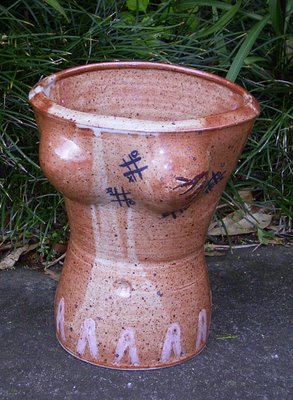
Frida Kahlo 1910 - 1954
Frida was born and lived almost all of her life in Mexico. She married Diego Rivera who was famous for his murals and his communist views which Frida shared.
While the Surrealists viewed her work as one of their own, her view was that she was expressing her feelings. 'They thought I was a Surrealist,' she said, 'but I wasn't. I never painted dreams. I painted my own reality.' Her reality was often one of pain as she suffered polio as a child and as a young adult was involved in a collision between a truck and a bus. This accident almost killed her, damaging her right leg and pelvis and she was left with continuous pain for the rest of her life.
Her work reflects her Mexican background being based on colourful Mexican folk art and in particular on the small votive pictures known as retablos, which the pious dedicated in Mexican churches. Most of her works are self-portraits as she was often bed-ridden during treatments for her injuries, and so, passed the time by painting. In the painting titled, Tree of Hope (1946), she depicts the torture of a metal body brace by day and the relative relief when it was removed at night. Other works depict her miscarriage and other distressing aspects of her unusual life. She had exhibitions in New York, Paris and last of all in Mexico.
I have been inspired by her work to make a female torso reflecting my own experience with early breast cancer. I aim to reflect the positive outcome and also have a little tongue-in-cheek dig at the radiology treatment where the patient is drawn on each day with texta, to allow the technicians to line up the machinery.
Reference:
Book:
Frida: a biography of Frida Kahlo by Herrera, Hayden
New York; Sydney: Harper & Row, c1983
Movie:
Frida – (starring Salma Hayek and Geoffrey Rush)
Web:
http://www.artchive.com/artchive/K/kahlo.html
No comments:
Post a Comment